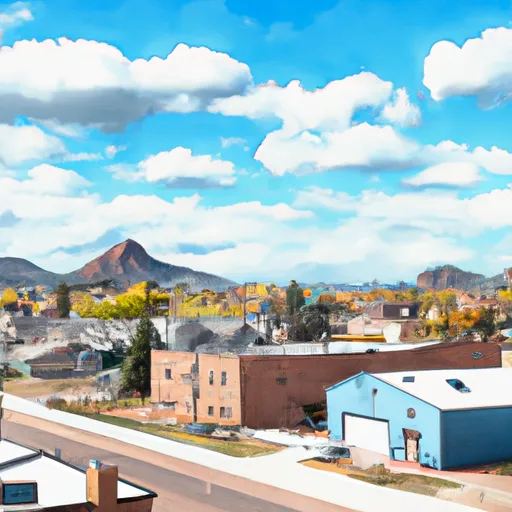-
 Snoflo Premium
Snoflo Premium
Get unlimited access to all our content
With no Ad interruptions! - Start Your Free Trial Login with existing account
Ward
Eden Index
Climate
7.0
•
Recreation
9.7
•
Community
•
Safeguard
6.2/10

Ward, Colorado is a small mountain town nestled in the Rocky Mountains at an elevation of around 9,450 feet. The climate in Ward is characterized by cool summers and cold winters. The average high temperatures in summer range from 65-75°F, while in winter, temperatures can drop below freezing, with average highs ranging from 35-45°F. The town experiences significant snowfall from November to April, making it a popular destination for winter sports enthusiasts.
Ward is surrounded by beautiful natural landscapes, including several lakes and rivers. Hydrological constituents in the area primarily include local creeks and streams, such as Left Hand Creek and Middle Boulder Creek. These waterways offer opportunities for fishing, kayaking, and paddleboarding, among other water-based activities.
Outdoor recreation opportunities in Ward are abundant. The town serves as a gateway to several hiking trails, including the popular Switzerland Trail and the Indian Peaks Wilderness. The area is also known for its mountain biking trails, rock climbing spots, and wildlife viewing opportunities. Ward is a haven for nature lovers and outdoor enthusiasts seeking to explore the scenic beauty of the Rocky Mountains.
What is the Eden Index?
The Snoflo Eden Index serves as a comprehensive rating system for regions, evaluating their desirability through a holistic assessment of climate health, outdoor recreation opportunities, and natural disaster risk, acknowledging the profound impact of these factors on livability and well-being.
Climate Health Indicator (CHI): 7.0
Ward receives approximately
578mm of rain per year,
with humidity levels near 50%
and air temperatures averaging around
5°C.
Ward has a plant hardyness factor of
5, meaning
plants and agriculture in this region thrive during a short period during spring and early summer. Most
plants will die off during the colder winter months.
By considering the ideal temperature range, reliable water supplies, clean air, and stable seasonal rain or snowpacks, the Climate Health Indicator (CHI) underscores the significance of a healthy climate as the foundation for quality living.
A healthy climate is paramount for ensuring a high quality of life and livability in a region, fostering both physical well-being and environmental harmony. This can be characterized by ideal temperatures, reliable access to water supplies, clean air, and consistent seasonal rain or snowpacks.
Weather Forecast
Streamflow Conditions
South Platte
Area Rivers
South Platte
Snowpack Depths
South Platte
Reservoir Storage Capacity
South Platte
Groundwater Levels
Recreational Opportunity Index (ROI): 9.7
The Recreational Opportunity Index (ROI) recognizes the value of outdoor recreational options, such as parks, hiking trails, camping sites, and fishing spots, while acknowledging that climate plays a pivotal role in ensuring the comfort and consistency of these experiences.
Access to outdoor recreational opportunities, encompassing activities such as parks, hiking, camping, and fishing, is crucial for overall well-being, and the climate plays a pivotal role in enabling and enhancing these experiences, ensuring that individuals can engage in nature-based activities comfortably and consistently.
Camping Areas
| Campground | Campsites | Reservations | Toilets | Showers | Elevation |
|---|---|---|---|---|---|
| Deer Creek | 13 | 9,092 ft | |||
| Kelsey | 17 | 8,035 ft | |||
| Empire City RV Parking | None | 8,635 ft | |||
| Meridian | 18 | 9,013 ft | |||
| Georgetown Lake | None | 8,439 ft | |||
| West Chicago Creek | 16 | 9,611 ft | |||
| Buffalo | 41 | 7,321 ft | |||
| Green Mountain | 6 | 7,615 ft | |||
| Echo Lake - Idaho Springs | 18 | 10,700 ft | |||
| Whiteside | 5 | 8,909 ft |
Nearby Ski Areas
Catastrophe Safeguard Index (CSI):
The Catastrophe Safeguard Index (CSI) recognizes that natural disaster risk, encompassing floods, fires, hurricanes, and tornadoes, can drastically affect safety and the overall appeal of an area.
The level of natural disaster risk in a region significantly affects safety and the overall livability, with climate change amplifying these risks by potentially increasing the frequency and intensity of events like floods, fires, hurricanes, and tornadoes, thereby posing substantial challenges to community resilience and well-being.
Community Resilience Indicator (CRI):
The Community Resilience Indicator (CRI) recognizes that education, healthcare, and socioeconomics are crucial to the well-being of a region. The CRI acknowledges the profound impact of these elements on residents' overall quality of life. By evaluating educational resources, healthcare accessibility, and economic inclusivity, the index captures the essential aspects that contribute to a thriving community, fostering resident satisfaction, equity, and social cohesion.

